.
Keep your eyes peeled this week for some spectacular fireballs — extremely bright meteors — lighting up the sky, like this one caught on camera in Thailand November 2:
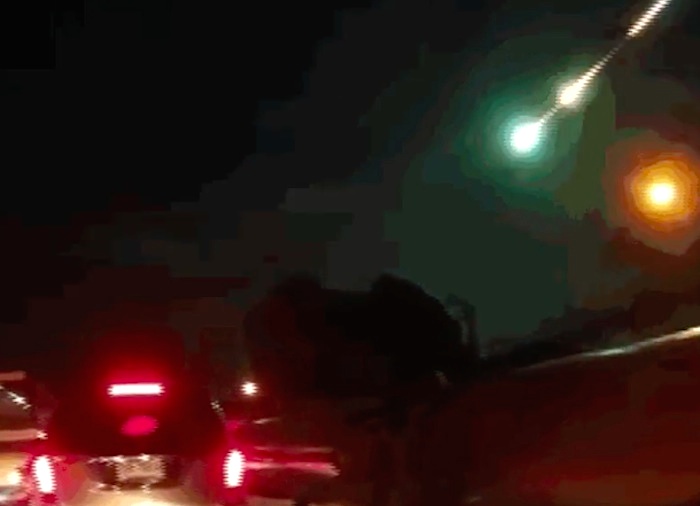
Fireballs are falling to Earth this week in numbers we won't see for another 10 years — here's how to watch
Right now, Earth is passing through Comet Encke's tail, generating the Taurid meteor shower in the process.
"The best time to view the Taurids is from midnight to 3 am local time," NASA wrote in a Reddit AMA. "There should be a handful per hour. Taurid rates are not high, but the ones you will see will be very bright."
The peak of the shower — when we can see the most meteors per hour — will be the evening of Wednesday, November 11. But Monday and Tuesday night are also a good time to sit back and look up, weather permitting.
The best way to watch any meteor shower is to get far away from city lights and look up, no special equipment required.
Look to Taurus
Meteor showers usually happen when Earth passes through a comet's stream of residual dust and debris in space.
The debris collides with our planet, is pulled toward Earth's center by gravity, and burns up in the atmosphere, producing bright streaks in the night sky that we sometimes refer to as falling stars.
Compared to other meteor showers, the Taurid meteors are relatively sluggish, colliding with Earth at speeds of about 65,000 mph — less than half the speed of the rapid Perseid meteors, which move at about 133,000 mph.
As a result, the Taurids appear to move slowly across the sky, so you can easily spot and track them with your naked eye.
Most of the meteors will likely appear to come from the direction of the constellation Taurus, hence the name Taurid meteors. Between the hours of midnight and 3 a.m., Taurus, shown at right, will be high in the night sky above the southern horizon.
You can use an app like Star Chart to figure out where Taurus will be in your night sky at peak viewing times.
Watch for fireballs
There are a couple of reasons why NASA suspects that this year's Taurid meteor shower will be worth watching.
First is that when the meteor shower peaks on the evening of Wednesday, November 11, the moon will be new.
So there will be no moonlight to outshine the meteors, and observers will have an especially dark night sky to enjoy the show. NASA estimates that during peak hours viewers can see between seven and 10 meteors an hour.
While those numbers don't stack up to the 100 meteors an hour you can sometimes see during the Perseid meteor shower in August, it's still worth watching since some of these meteors are likely to be brilliant fireballs.
That's one of the special features about the Taurid meteor shower: It often produces a number of fireballs, which are meteors defined by their brightness.
Fireballs are at least as bright as Venus, the brightest object in the night sky besides our moon. A single fireball can briefly light up a large chunk of the night sky, and therefore are some of the most exciting meteors to watch for.
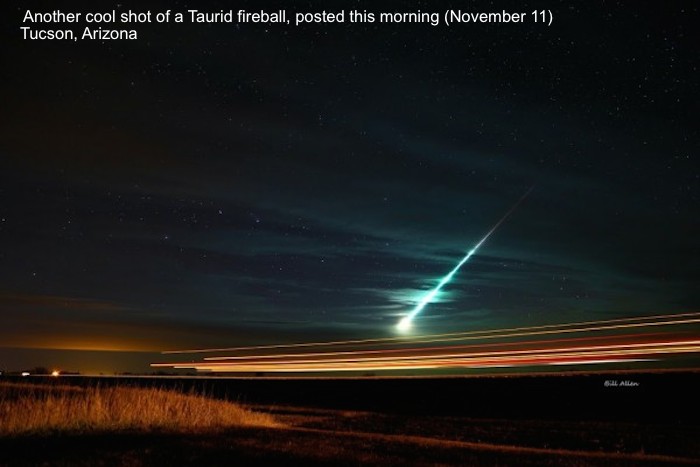
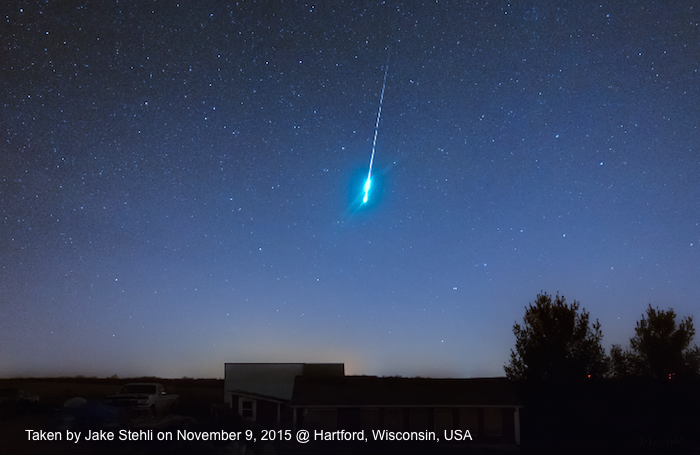
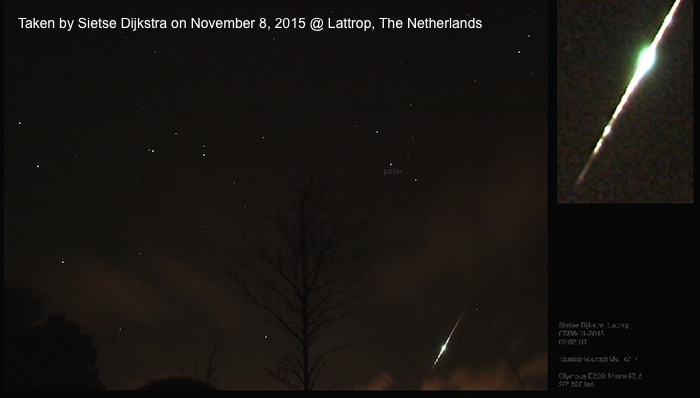
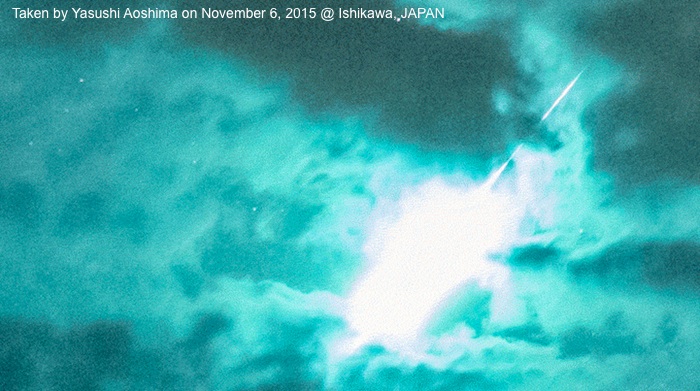
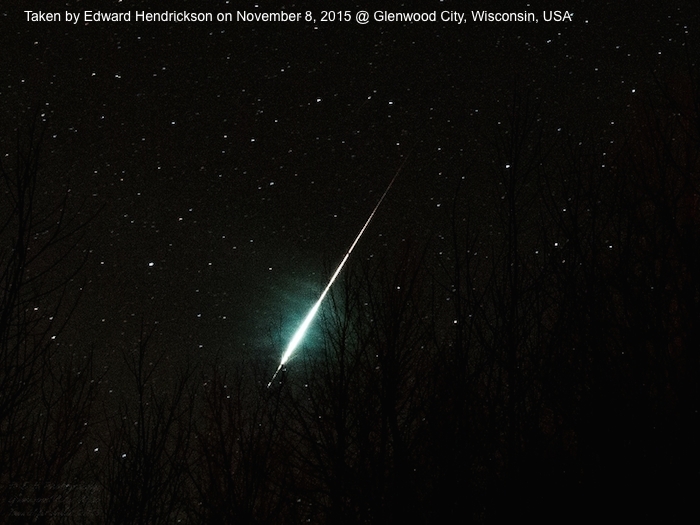
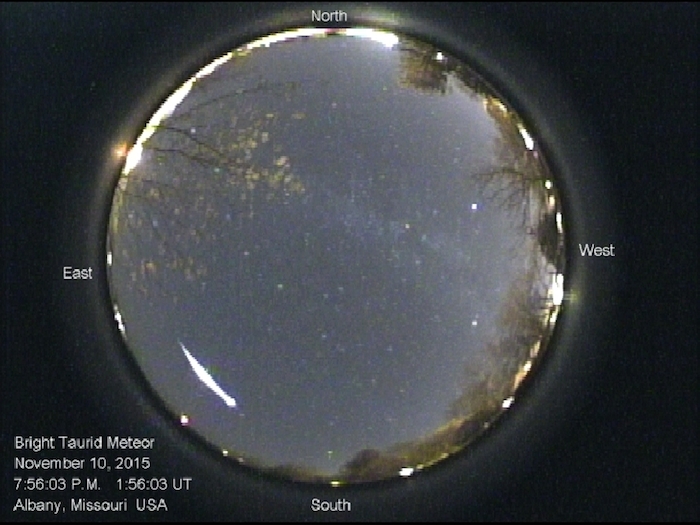

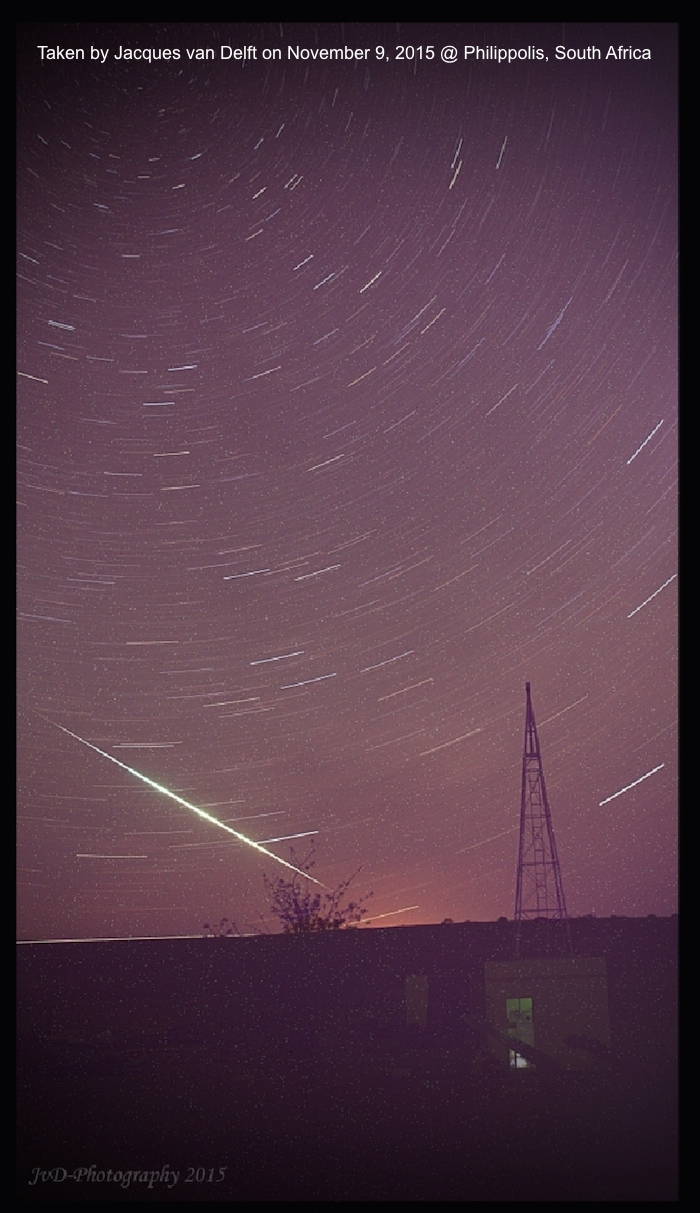
2015 is a swarm year
Typically, the Taurid meteor shower is weak and, therefore, neglected by viewers. But this year's meteor shower is different.
About every 10 years, Earth passes through a particularly dense stream of Comet Encke's tail — leftover debris that the wind and heat from the sun blew off the comet's surface and into space. These years are called "swarm years."
The last time we saw a noteworthy Taurid meteor shower was in 2005, which means 2015 is also a swarm year and our lucky, once-in-a-decade opportunity for a good show with above-average meteor rates and more fireballs.
Quelle: BI
-
Update: 11.11.2015
.
Bilder-Buch der letzten Tauriden aus aller Welt:
.








Quelle: Spaceweather
4268 Views
